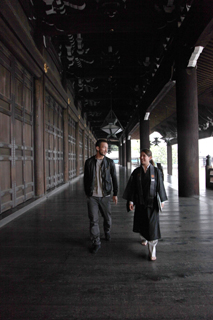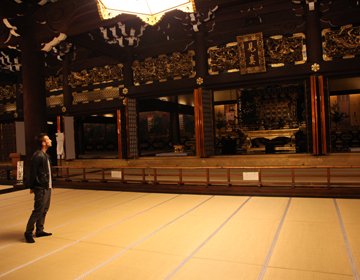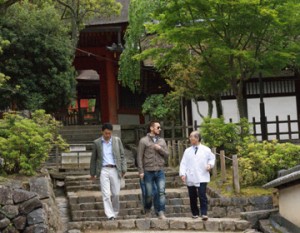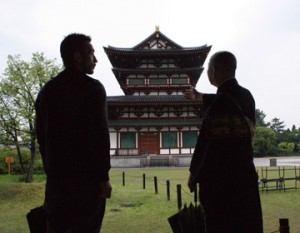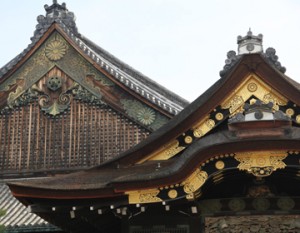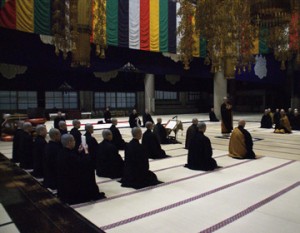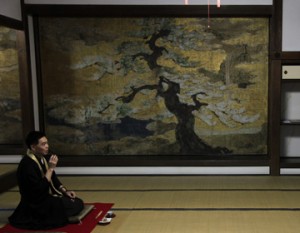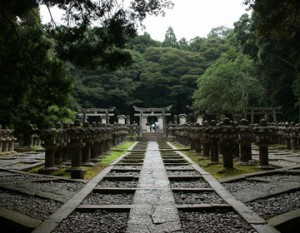The Start of Higashi Honganji
The official name for ”Higashi Honganji” is ”Shinshu Honbyou”, as it is the head temple of Jodo Shinshu ”Shinshu Ohtaniha”. In Kyoto there is also a west, Nishi Honganji and sometimes they are casually referred to as ”Ohigashisan” and ”Onishisan” Nishi Honganji is famous for having been the military quarters for the Shinsengumi. The west and east Honganji temples were in fact one temple, acting as the head temple for Jodo shinshu. It was separated into east and west in 1602 (year Keicho 7). Honganji flourished under Kennyo, the 11th temple head priest, whose name is well known as being the arch enemy of Oda Nobunaga. After Kennyo’s death, the temple was divided in two, the radicals and non-radicals just as the battles against Nobunaga had been. Eventually the third son, Junnyo supporting the non-radicals succeeded as the 12th head priest with the backing of Toyotomi Hideyoshi, and later Tokugawa Ieyasu advocated the first son Kyonyo and appointed him head priest of ”Higashi Honganji” which made the separation between east and west significant.
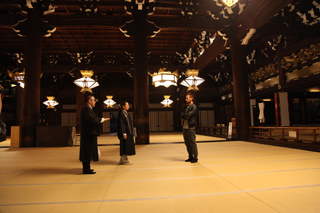
Destroyed by Fire and its Restoration
Later in 1641, in the year Kannei 18, the temple prospered as Tokugawa Ieyasu donated approximately 33,000 m2 of land which became Shoseien, which is still appreciated in the present. However, with ”Hamagurigomon no hen” at the end of the Shogunate period, the major part of Mikagedo, Amidado, had burnt down. In the Meiji era it was restored and was completed in 1895 (Meiji 28). Both have historical value, representing modern Japanese architecture and are designated as Cultural Asset. Aforementioned Shoseien too had burnt down, but was restored in the Meiji period, now with seasonal flowers that can be appreciated throughout the year.
